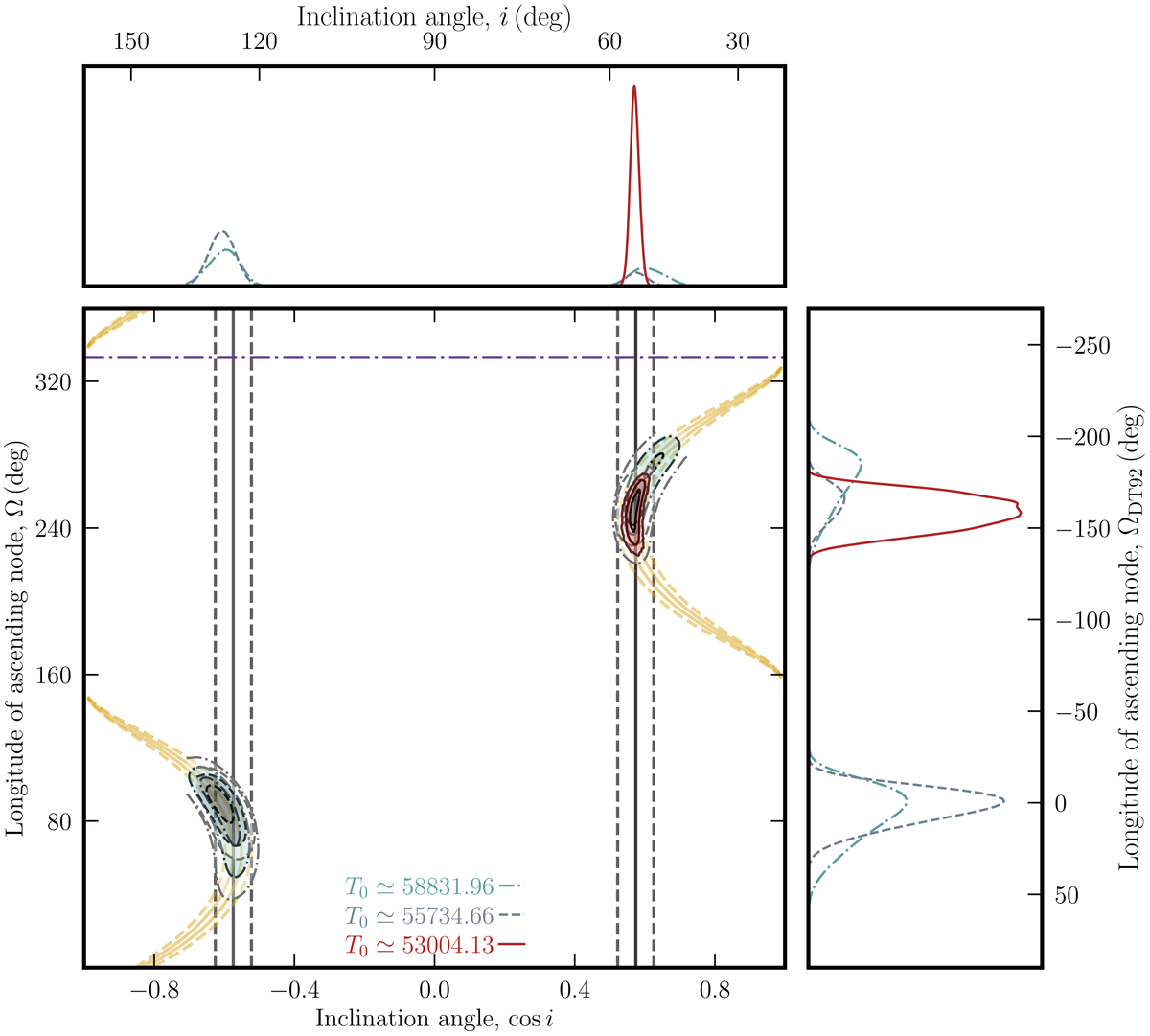Fig. 6.

Download original image
Allowable orbital orientation for PSR J1933−6211 binary. In the main panel, we display the orbital orientation space in the observer’s convention (the Ω according to the DT92 convention is shown by the scale on the right, the cos i in that convention is simply −cos i). The lines represent constraints from two parameters measured with a DDH solution: in black we show the constraint from ς, and in brown we show the constraint from ẋ (1σ solid, 3σ dashed) assuming it is solely caused by the proper motion of the system; the position angle of the latter is shown by the dot-dashed purple line. The contours, enclosing progressively darker shades of red, include 98%, 86% and 39% C.L. of the 2D probability density function (pdf) and represent the T2 timing model solutions calculated by TEMPONEST and as presented in Table 3. This model takes into account all kinematic effects, including the AOP. The marginalised constraints on cos i and Ω are shown as 1D histograms (in red) in the top and side panels, respectively. For this model, with T0 ∼ 53 004, the AOP is clearly detected, as we can see from the fact that the degeneracy between the two possible cos i − Ω solutions has been lifted: no probability remains in the solution at Ω ∼ 60 deg, cos i ∼ −0.6. We also include the cos i − Ω probability density contours as obtained with T0 set to 55 734 (dashed grey) and 58 836 (dot-dashed blue), respectively. As described in Sect. 4.3.1, we unexpectedly observe i and Ω estimates to depend on T0.
Current usage metrics show cumulative count of Article Views (full-text article views including HTML views, PDF and ePub downloads, according to the available data) and Abstracts Views on Vision4Press platform.
Data correspond to usage on the plateform after 2015. The current usage metrics is available 48-96 hours after online publication and is updated daily on week days.
Initial download of the metrics may take a while.


